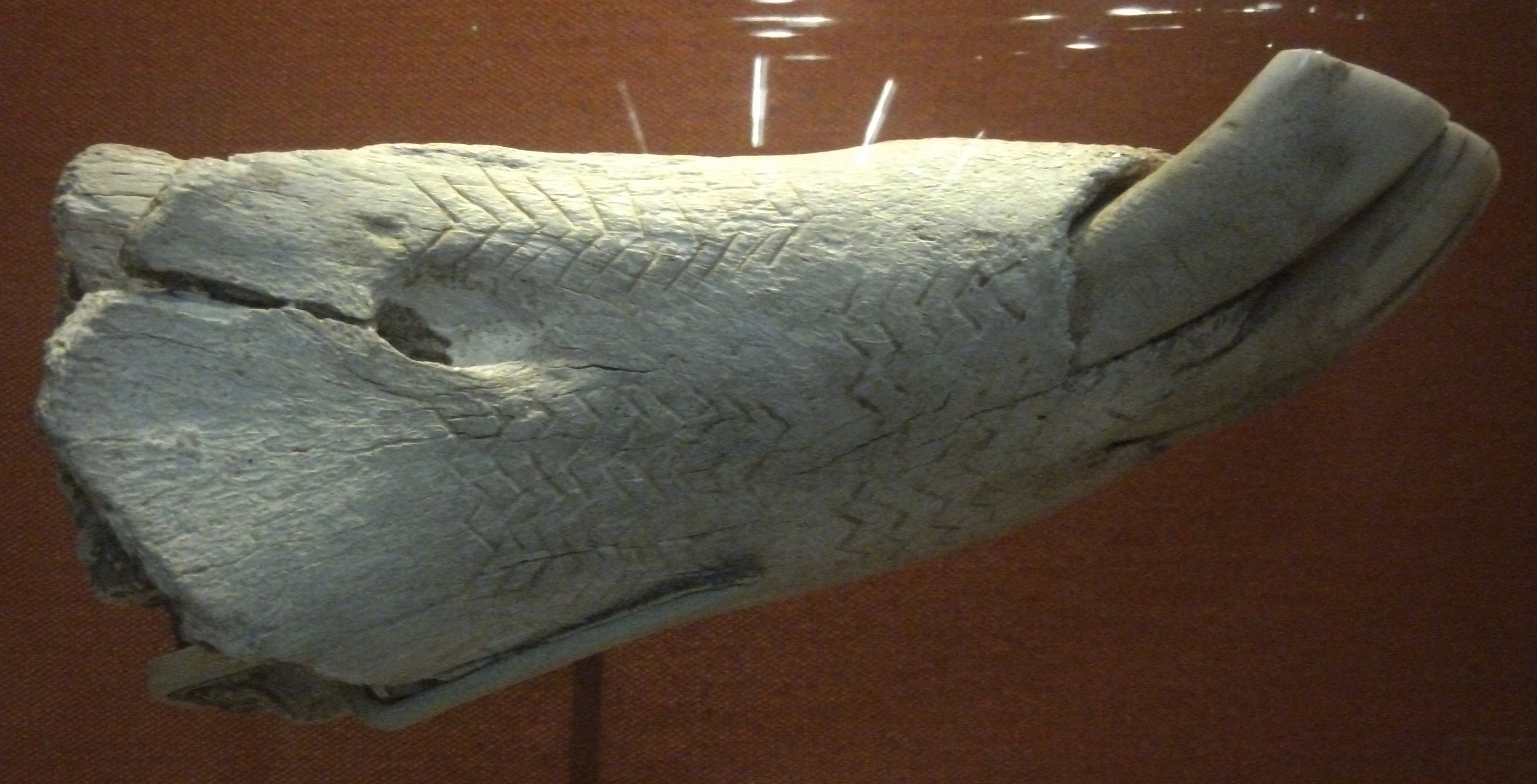Kendrick's Cave Decorated Horse Jaw on:
[Wikipedia]
[Google]
[Amazon]
 The Kendrick's Cave Decorated Horse Jaw is one of the finest pieces of portable artwork dated to the end of the last Ice Age or Late Glacial period that has been found in Britain.Decorated horse jaw.
The Kendrick's Cave Decorated Horse Jaw is one of the finest pieces of portable artwork dated to the end of the last Ice Age or Late Glacial period that has been found in Britain.Decorated horse jaw.
British Museum 2011. Retrieved 20 October 2011. Others in Britain include the
at
*Sieveking, Ann. ''A catalogue of Palaeolithic art in the British Museum.'' London: British Museum Publications, 1987. {{ISBN, 0-7141-1376-X
Front view and description of Kendrick's Cave.
Prehistoric objects in the British Museum Art of the Upper Paleolithic Bone carvings
 The Kendrick's Cave Decorated Horse Jaw is one of the finest pieces of portable artwork dated to the end of the last Ice Age or Late Glacial period that has been found in Britain.Decorated horse jaw.
The Kendrick's Cave Decorated Horse Jaw is one of the finest pieces of portable artwork dated to the end of the last Ice Age or Late Glacial period that has been found in Britain.Decorated horse jaw.British Museum 2011. Retrieved 20 October 2011. Others in Britain include the
Robin Hood Cave Horse
The Robin Hood Cave Horse (previously known as the Ochre Horse) is a fragment of rib engraved with a horse's head, discovered in 1876, in the Robin Hood Cave in Creswell Crags, Derbyshire. It is the only piece of Upper Paleolithic portable art sh ...
and the Pin Hole Cave man. It is the oldest known piece of portable art from Wales.
When originally acquired by the British Museum in 1959, the jaw was dated to between 8,000 and 25,000 years old but radiocarbon dating
Radiocarbon dating (also referred to as carbon dating or carbon-14 dating) is a method for determining the age of an object containing organic material by using the properties of radiocarbon, a radioactive isotope of carbon.
The method was de ...
methods have enabled it to more accurately dated to the Upper Palaeolithic
The Upper Paleolithic (or Upper Palaeolithic) is the third and last subdivision of the Paleolithic or Old Stone Age. Very broadly, it dates to between 50,000 and 12,000 years ago (the beginning of the Holocene), according to some theories coin ...
era, about 10,000 years ago.
The jaw was found by Thomas Kendrick, a lapidary
Lapidary (from the Latin ) is the practice of shaping stone, minerals, or gemstones into decorative items such as cabochons, engraved gems (including cameos), and faceted designs. A person who practices lapidary is known as a lapidarist. A lap ...
, in 1880 at Kendrick's Cave
Kendrick's Cave on the Great Orme, Llandudno, Wales, was the site of important archaeological finds by Thomas Kendrick in 1880. The site is a small natural cavern on the south of the Great Orme Head, a limestone massif on the seaward side of Llan ...
, Llandudno, Wales. It now forms part of the Christy Collection in the British Museum
The British Museum is a public museum dedicated to human history, art and culture located in the Bloomsbury area of London. Its permanent collection of eight million works is among the largest and most comprehensive in existence. It docum ...
, where it is normally on display in Room 2. In 2013 it was displayed in the exhibition at the British Museum ''Ice Age Art: Arrival of the Modern Mind''.
Features and imagery
The jaw consists of a 13.8 cm piece of bone, with three remaining incisor teeth. The underside includes incised blocks of zig-zag decoration created using a flint tool, possibly with a fairly short cutting edge. The zig-zag or herringbone effect is formed by five panels of incised chevrons. Each panel differs from the other with respect to the number of lines deployed, its length and width. Some lines meet neatly at the apex of the incision – while others overlap. The artwork may have been enhanced with ochre in the Ice Age – but all traces have long since disappeared.G. Sieveking 1971, 239 Either way, the incised lines create an effect whereby the areas between the incisions appear raised and dynamic.See also
*Prehistoric art
In the history of art, prehistoric art is all art produced in preliterate, prehistorical cultures beginning somewhere in very late geological history, and generally continuing until that culture either develops writing or other methods of re ...
*Prehistoric Wales
Prehistoric Wales (Welsh: ''Cynhanes Cymru'') in terms of human settlements covers the period from about 230,000 years ago, the date attributed to the earliest human remains found in what is now Wales, to the year AD 48 when the Roman army began a ...
References
Further reading
*"The Kendrick's Cave Mandible" by G. de G. Sieveking in ''The British Museum Quarterly'', Vol. 35, No. 1/4 (Spring, 1971), pp. 230–250. Also availablat
*Sieveking, Ann. ''A catalogue of Palaeolithic art in the British Museum.'' London: British Museum Publications, 1987. {{ISBN, 0-7141-1376-X
External links
Front view and description of Kendrick's Cave.
Prehistoric objects in the British Museum Art of the Upper Paleolithic Bone carvings